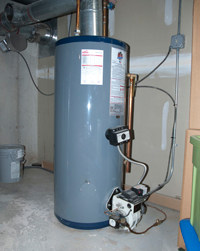Everyone seems to have their own unique opinion about Tips on Maintaining a Water Heater.

Warm water is necessary for daily convenience, whether it's for a rejuvenating shower or washing meals. To ensure your warm water system runs efficiently and lasts much longer, regular maintenance is essential. This article supplies sensible suggestions and understandings on how to preserve your home's warm water system to prevent disturbances and costly repair services.
Intro
Maintaining your home's hot water system could appear overwhelming, however with a couple of straightforward steps, you can ensure it runs efficiently for several years to find. This overview covers every little thing from recognizing your hot water system to DIY upkeep tips and knowing when to hire specialist aid.
Value of Preserving Your Warm Water System
Normal upkeep not only prolongs the lifespan of your hot water system yet also ensures it runs effectively. Ignoring upkeep can result in decreased efficiency, greater energy costs, and even early failing of the system.
Indicators Your Warm Water System Demands Maintenance
Knowing when your warm water system needs interest can stop significant problems. Watch out for indicators such as irregular water temperature, odd noises from the heater, or corroded water.
Understanding Your Warm Water System
Prior to diving right into upkeep jobs, it's handy to recognize the standard parts of your warm water system. Generally, this includes the water heater itself, pipes, anode poles, and temperature level controls.
Month-to-month Upkeep Tasks
Normal monthly checks can help catch minor issues prior to they escalate.
Flushing the Water Heater
Flushing your water heater eliminates sediment accumulation, enhancing effectiveness and extending its life.
Checking and Replacing Anode Rods
Anode rods prevent corrosion inside the storage tank. Examining and replacing them when worn is important.
Examining and Adjusting Temperature Level Settings
Readjusting the temperature level settings guarantees optimal efficiency and security.
DIY Tips for Maintenance
You can execute numerous maintenance jobs yourself to maintain your warm water system in top problem.
Checking for Leakages
Consistently check pipes and connections for leakages, as these can cause water damage and greater expenses.
Evaluating Stress Relief Valves
Testing the stress safety valve guarantees it works properly and prevents extreme pressure build-up.
Protecting Pipelines
Protecting hot water pipelines decreases warm loss and can conserve power.
When to Call a Specialist
While DIY maintenance is beneficial, some concerns need professional competence.
Facility Concerns Needing Specialist Assistance
Instances include significant leaks, electrical troubles, or if your hot water heater is consistently underperforming.
Regular Professional Upkeep Conveniences
Expert upkeep can consist of thorough assessments, tune-ups, and ensuring compliance with safety and security standards.
Final thought
Routine upkeep of your home's hot water system is necessary for efficiency, durability, and price financial savings. By following these tips and understanding when to look for specialist help, you can make sure a reliable supply of hot water without unforeseen disruptions.
Water Heater Maintenance Tips
Test the TPR Valve
Shut off the power and the cold-water supply valve. Place a bucket under the pipe connected to the temperature-pressure-release (TPR) valve on the top or side of the tank. (This valve opens if the tank pressure gets too high.) Lift the valve’s tab to let some water out, then let go. If water keeps flowing, drain the tank partway, unscrew the old valve with a pipe wrench, and install a new one. Check the Anode Rod
Put a hose to the tank’s drain cock and let out a few gallons of water. Now fit a 1 1/16-inch socket onto the rod’s hex head on top of the heater (or under its top plate) and unscrew the rod. If it’s less than ½ inch thick or coated with calcium, buy a new one, wrap its threads with Teflon tape, put it back in the tank, and tighten securely. Use this segmented rod if headroom above the tank is limited. Drain the Tank and Wash Out Sediment
Drain the remaining water in the tank into the bucket, then stir up the sediment on the tank’s bottom by briefly opening the cold-water supply valve. Drain and repeat until clean water comes out of the hose. Close the drain cock, refill the tank, and turn its power back on. Adjust the Temperature
Find the temperature dial on the side of the tank and unscrew its cover. Adjust the dial to 120 degrees using a flathead screwdriver. For every 10 degrees the temperature is lowered, you can expect to save up to 5 percent in energy costs. Turn the water heater off or the thermostat down to its lowest setting if you plan to be away from home for more than three days. Insulate the Pipes
Buy some self-sticking 3/8-inch-thick foam pipe insulation that matches the pipes’ diameter. Slide the foam over the hot-and cold-water pipes as far as you can reach. Insulating the cold-water pipe prevents condensation in summer. Peel the tape and squeeze the insulation closed. If the pipe is 6 inches or less from the flue, cover it with 1-inch-thick unfaced fiberglass pipe wrap. https://www.thisoldhouse.com/plumbing/21016402/how-to-maintain-a-water-heater

I recently found that blog entry on Tips For Maintaining Your Hot Water Heater while doing a lookup on the internet. Sharing is caring. You just don't know, you may be doing someone a favor. Thank-you for taking the time to read it.
Free Quote
 Barret Oliver Then & Now!
Barret Oliver Then & Now! Joseph Mazzello Then & Now!
Joseph Mazzello Then & Now! Tahj Mowry Then & Now!
Tahj Mowry Then & Now! Jenna Von Oy Then & Now!
Jenna Von Oy Then & Now! Nicki Minaj Then & Now!
Nicki Minaj Then & Now!